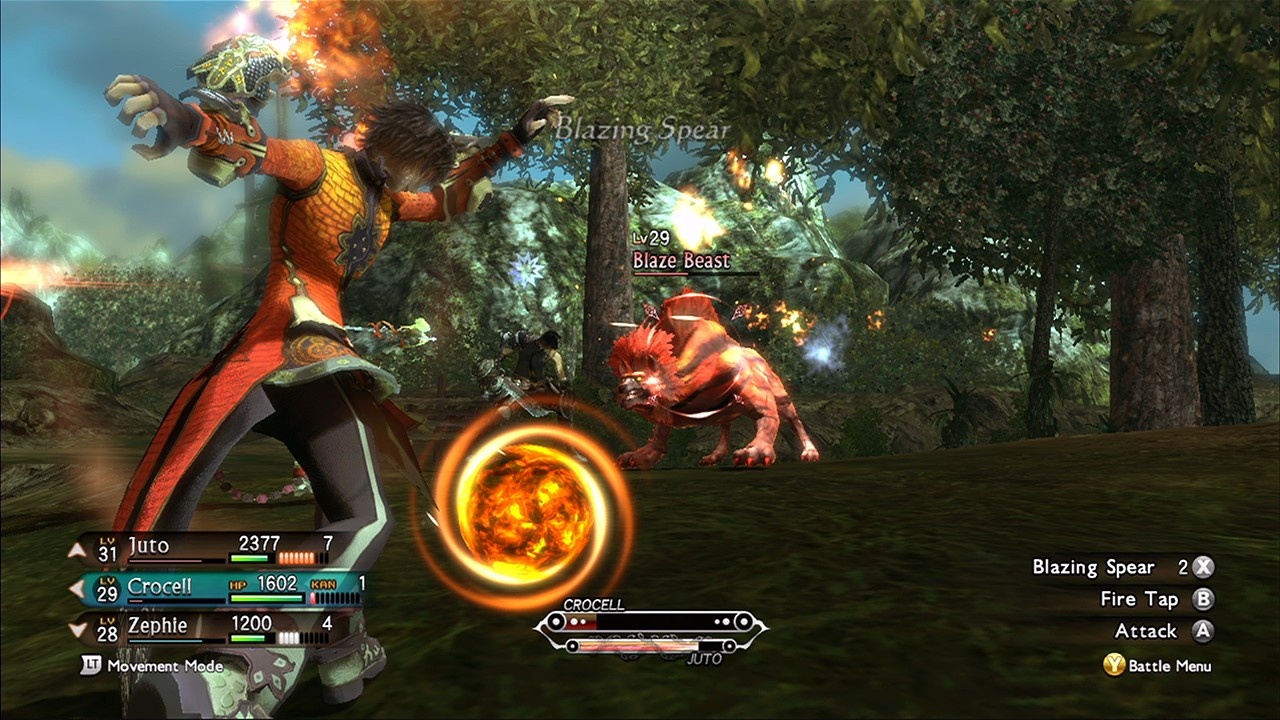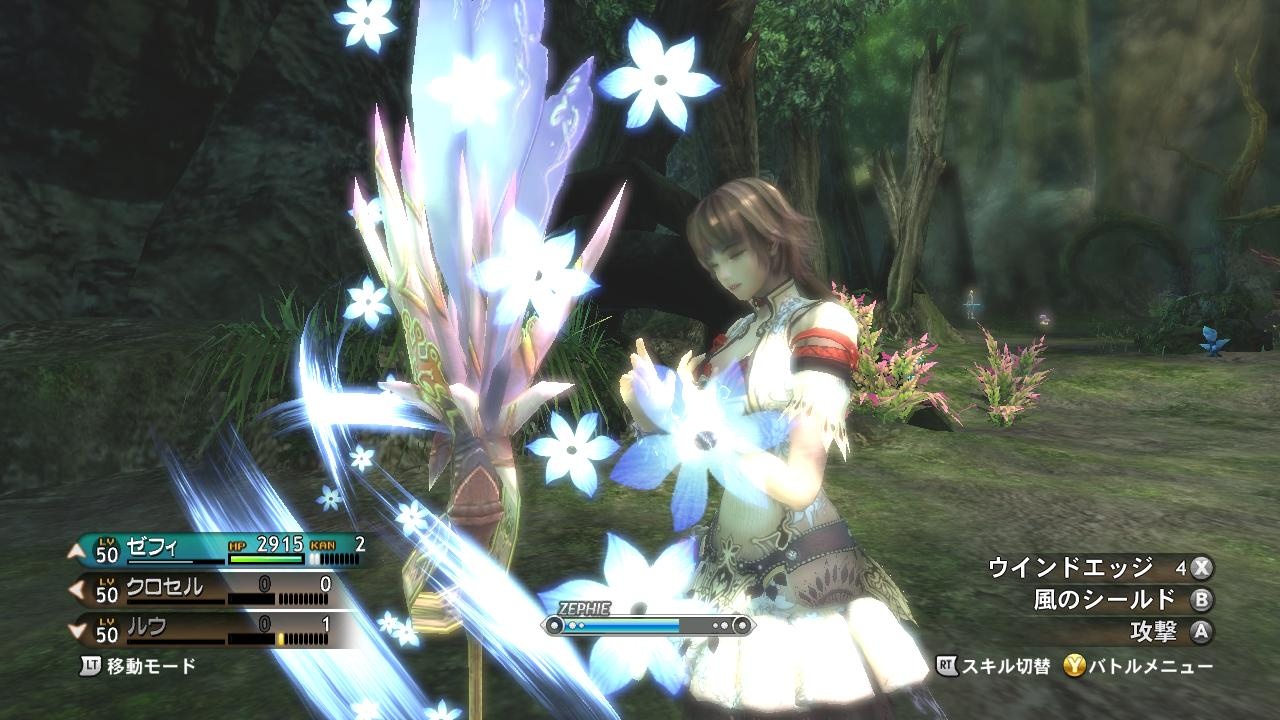Magna Carta 2 is an unapologetically cliched role-playing game that focuses on real-time, team-based combat, which the game translates into a single-player experience rather successfully. Its novel battle system, emphasizing speed and brutal skill chains, is initially fun, but it eventually struggles with hack-and-slash mechanics and aggravating AI, occasionally regressing into repetitive button mashing. Though the game looks superb and is mildly interesting at some points, its substandard plot and unsophisticated gameplay undermine a lot of the excitement.

The storyline is underwhelming and dull, offsetting its dramatic tone against flat, archetypal characters and a confusing world history. A greedy politician has murdered the queen of Lanzheim and seized the throne, sparking civil war between the usurper and a shoddy resistance group. You control Juto, an amnesic country bumpkin who stumbles into Princess Zephie, the overburdened heiress and a major pawn for the resistance. You guide the duo and Zephie's elite combat unit to retake the throne, unveiling Juto's troublesome past along the way.
The real-time battle system is refreshingly fast-paced, incorporating active, turn-based elements that let you control every aspect of combat while keeping you on your toes. You fuel your abilities with kan--energy stored by constantly slashing opponents with standard attacks. Exerting yourself raises a stamina gauge, and once it's full, you go into an overdrive state that briefly increases your attack power but can cause you to overheat, rendering you unable to attack or use items for a period of time. It takes some finesse to avoid overheating, which you can do by instantaneously switching between party members in the heat of battle; this grants you direct control over every ally's stamina gauge and attacks at a moment's notice, encouraging you to strategize on the fly. Each character possesses two distinct fighting styles and a healthy variety of skills to enliven combat, along with special talents that you activate via onscreen prompts. These abilities often boost your defenses and can help make the game's challenging boss fights less daunting.
The battle system's most enjoyable aspect is its high-speed chaining, which intensifies combat by forcing you to focus on proper timing and stamina management. Ideally, you'll time your basic attacks to keep your party's stamina gauges up. This lets you easily initiate a chain by performing a skill while in overdrive status, though you'll overheat. Your goal is to quickly perform a second skill using another party member who is in overdrive; doing so before the previous member recovers from overheat completes the chain and resets both characters' stamina gauges, freeing them from overheat status and dealing increased damage. If you slip up, however, you'll have two useless characters briefly trapped in overheat. The process may sound complicated, but it's relatively painless to learn, requiring some skill in balancing how long you stay in overdrive against the risks and rewards of chaining. The chaining system's only disappointment is its failure to mature beyond the bare-bones basics, restricting you to repetitive, two-character chain spamming that often devolves into button mashing, which lowers the excitement.
Party AI is functional but frequently problematic. Characters get stuck on environmental obstructions like barricades, trees, or even small dips in the ground, which makes you feel like you're controlling a party of nitwits. Sometimes your allies will stand on affected status areas that are harmful to them or stray too close to a boss, resulting in fevers, poisonings, bouts of vertigo or heavy beatings. Fighting in tight corridors is especially frustrating, because they're usually littered with objects, and the camera zooms in too close, limiting your field of view and making it difficult to manage your party. The AI settings could also use some tweaking; even if your party members are set to attack whatever you target, they'll often loaf around while you're being pummeled or designate their own targets, which interrupts your strategizing. Ultimately, the only way to work around the AI is to assume direct control of offending teammates, which is an annoying distraction.

A good variety of side quests and basic customization provide a little depth to relieve the sometimes finicky combat. These include missions to rescue civilians, hunt vicious monsters, and activate character-specific quests to acquire special gear, but a few frustrating yet thankfully sporadic quest bugs prevent you from receiving rewards. A basic crafting system lets you tweak stats by creating accessories from gems, or you can insert the gems into weaponry to directly enhance abilities. Unfortunately, you can't combine gems to unlock new varieties or forge weapons and consumable items, so the system is limited.
Aesthetically, the game achieves a distinctive, surrealistic look. The expansive, richly detailed environments are well textured, and battle effects are impressive, with colorful lights and flamboyant sequences, though they periodically cause minor slowdown. Characters are creatively designed with exquisite outfits, and everything from facial expressions to fluid battle movements has been expertly modeled. The orchestral soundtrack offers appropriately sullen background music for the serene forests and desolate war zones, along with livelier scores for battles, but it's hardly exceptional. Sound effects are usually grandiose and often gratifying to hear, such as the sound of steel weapons sliding against one another. Voicing is a little melodramatic but competent, so you'll rarely feel the need to reach for the mute button.
The game has a respectable 40 hours of playtime if you complete most side quests, but its replayability is lowered by a noticeable lack of dungeons to explore and a high degree of linearity, restricting your adventuring until you're more than halfway in. The battle system's initial allure also wanes, making one play-through more than sufficient. Magna Carta 2 struggles with irritating AI and a generic plot, leaving its high-speed battle system and impressive visual style as highlights to an otherwise banal adventure. Some combat aspects are enjoyable, but the game's shallowness and redundancy are uninspiring.